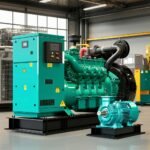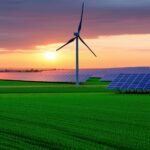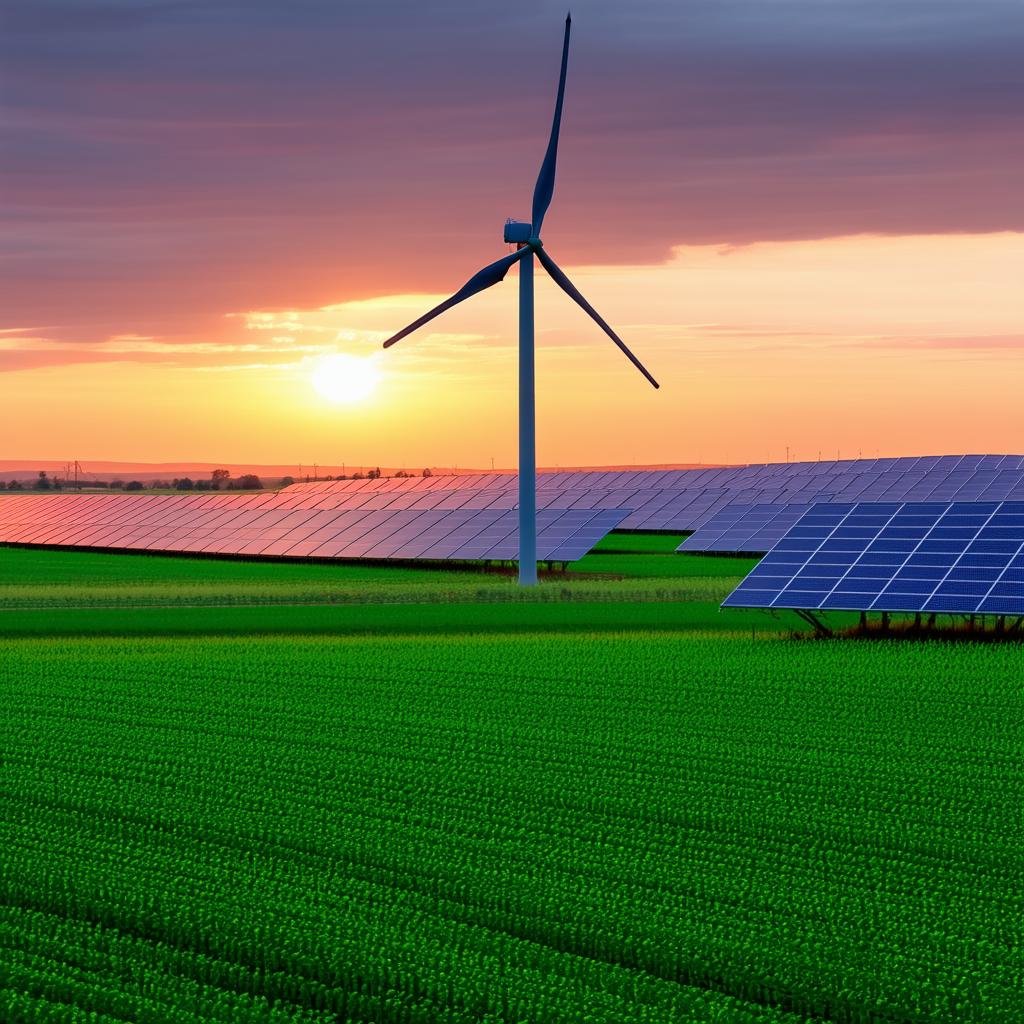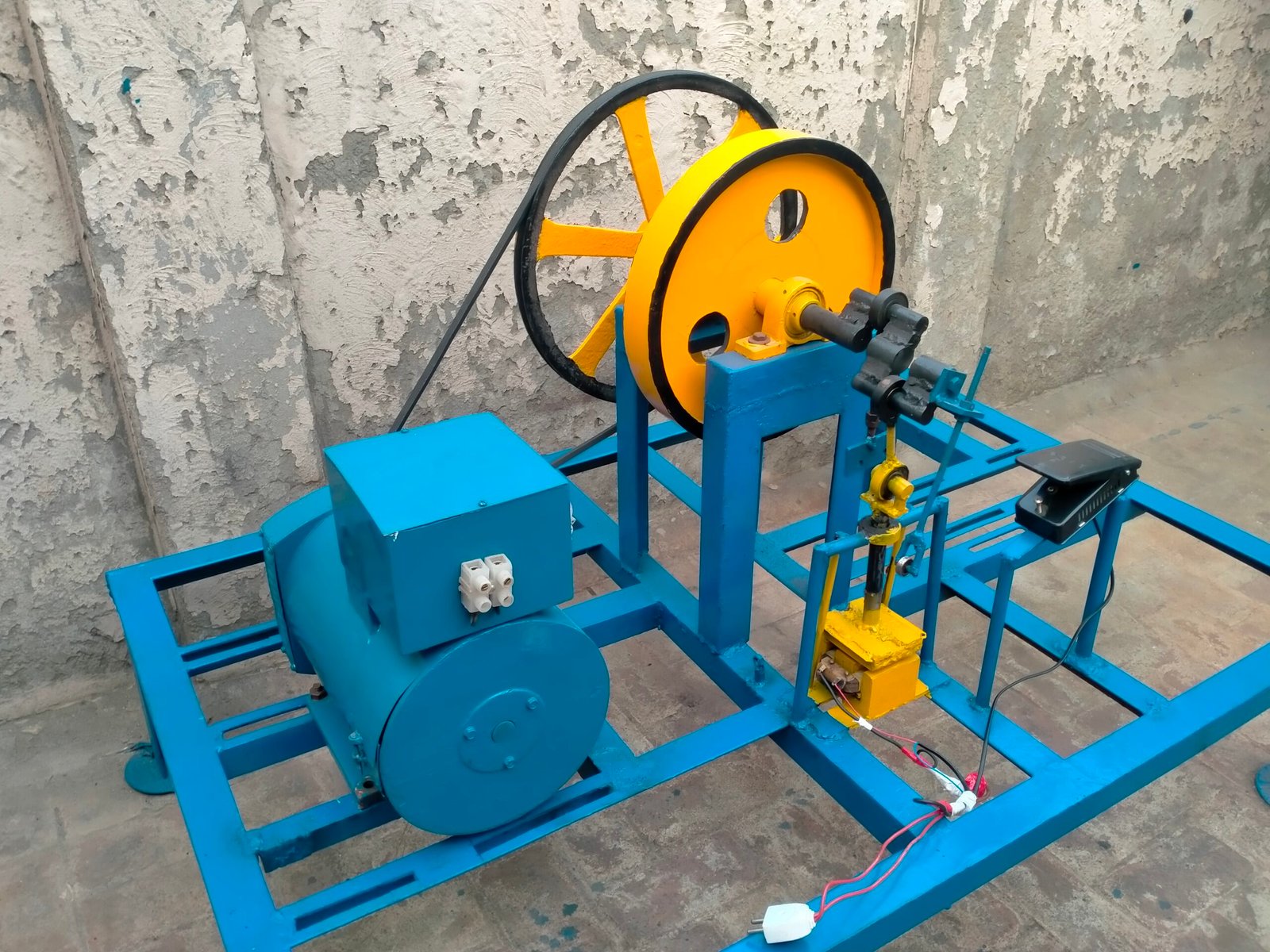
Introduction to Free Energy Generators
Harnessing the power of Free Energy By Magnetic Force, we can create a free energy generator capable of producing 220V. This article will guide you through the process of creating your own free energy generator at home, using simple materials and tools.
The pursuit of harnessing untapped energy has been a persistent endeavor in the sphere of science and technology. Energy generators that operate freely, also known as zero-point energy devices or perpetual motion machines, aspire to exploit the immense and seemingly infinite energy that pervades the universe without dependence on traditional fuel sources. The notion of free energy is centered around the belief that there is an intrinsic energy potential within the vacuum of space, often termed as zero-point energy or vacuum fluctuation energy. This hypothetical energy source has fascinated scientists and inventors for years, offering the allure of clean, sustainable, and unlimited power.
The genesis of the free energy generator concept can be linked to the laws of thermodynamics, specifically the first and second laws. The first law of thermodynamics, also recognized as the law of energy conservation, asserts that energy cannot be created or annihilated, only transmuted from one form to another. The second law introduces the idea of entropy, implying that in any energy conversion process, a portion of energy is inevitably lost as waste heat. Advocates of free energy believe that by exploiting the vast reservoir of zero-point energy, it is feasible to surmount the restrictions imposed by these thermodynamic principles.
A notable figure in the quest for free energy is Nikola Tesla, an innovative inventor and engineer. Tesla, renowned for his contributions to the evolution of alternating current (AC) electricity, also delved into unconventional ideas related to harnessing ambient energy. His Wardenclyffe Tower project, designed to transmit power wirelessly using the Earth’s resonant frequency, was a testament to his vision of accessing free energy. Despite encountering financial hurdles and ultimately being deserted, Tesla’s work has motivated subsequent generations of inventors to investigate the potential of free energy.
Theoretical models supporting the existence of zero-point energy derive from quantum physics, where particles are perpetually in a state of flux, even in a vacuum. Quantum field theory suggests that these fluctuations contribute to an underlying energy that pervades the entirety of space. However, exploiting this energy remains a significant challenge due to the minuscule magnitudes involved and the elusive nature of the quantum realm.
Various prototypes of free energy generators have surfaced over time, each purporting to offer a glimpse into the potential of harnessing zero-point energy. One such concept is the magnetic motor, which depends on the perpetual motion of magnets to generate continuous rotational motion, thereby producing electrical energy. While these devices have attracted attention from enthusiasts, they often face criticism for contravening the laws of thermodynamics and failing to demonstrate sustained energy output.
Another path explored in the pursuit of free energy is the notion of overunity devices, which allegedly produce more energy output than the input required to operate them. These devices challenge conventional understanding and have ignited debates within the scientific community. Critics argue that such devices infringe the principles of energy conservation, while supporters believe that they signify a paradigm shift in our comprehension of physics.
In recent times, advancements in materials science and nanotechnology have facilitated the development of innovative approaches to free energy generation. Some researchers are investigating the potential of harvesting energy from ambient sources such as radiofrequency signals, environmental vibrations, and even temperature fluctuations. These endeavors strive to create self-sustaining systems that can function indefinitely without the need for external power sources.
While the concept of free energy generators continues to enchant the imagination of inventors and researchers, the scientific community remains vigilant and demands rigorous experimental validation. The pursuit of free energy encounters significant challenges, including the need for reproducibility, adherence to established scientific principles, and surmounting technological barriers.
In conclusion, the exploration of free energy generators represents an intriguing journey at the crossroads of theoretical physics, engineering, and technological innovation. Whether driven by the aspiration for sustainability, independence from conventional energy sources, or the dream of unlocking limitless power, the quest for free energy pushes the boundaries of our comprehension of the physical world. As researchers continue to wrestle with the complexities of zero-point energy and its potential applications, the path to actualizing practical and reliable free energy generators remains an open question that invites the scientific community to delve deeper.
Understanding the Concept of Free Energy
Free energy, also known as zero-point energy, is a concept that has intrigued scientists and inventors for centuries. It refers to the energy that exists in a system at absolute zero temperature. This energy can be harnessed and converted into usable power, such as electricity.
Grasping the notion of free energy is a multifarious journey that traverses the domains of physics, thermodynamics, and even philosophy. Essentially, free energy signifies a system’s ability to execute work, with implications that reach far beyond the boundaries of scientific dialogue. To embark on this voyage of understanding, it is vital to probe into the bedrock of thermodynamics, a field that dictates the behavior of energy in its various forms within a system.
Within the sphere of thermodynamics, the idea of free energy is encapsulated in the Gibbs free energy (G), a comprehensive metric that amalgamates enthalpy (H) and entropy (S). The Gibbs free energy serves as a powerful instrument in predicting whether a specific chemical process will transpire spontaneously under constant temperature and pressure. The very concept of spontaneous processes introduces the idea of systems striving for a state of lower free energy, akin to a natural tendency towards stability.
Venturing into the complexities of free energy necessitates a journey into the foundational laws of thermodynamics. The first law, often referred to as the law of energy conservation, posits that energy cannot be created nor destroyed in an isolated system. This law forms the basis for understanding how energy transformations transpire within a system. The second law, conversely, introduces the concept of entropy, a measure of the disorder or randomness within a system. The fusion of these laws leads to the realization that systems tend to evolve towards states of higher entropy, a phenomenon that aligns with the concept of free energy minimization.
A pivotal point in comprehending free energy involves distinguishing between open and closed systems. In an open system, energy exchange with the surroundings is permissible, allowing for the system to adjust its internal parameters, including free energy. Closed systems, however, lack such interchange, limiting their ability to modify free energy through external means. This distinction is crucial when applying the principles of free energy to real-world scenarios, from biological processes within living organisms to the dynamics of ecological systems.
Biological systems offer a fascinating perspective through which to scrutinize the concept of free energy. Organisms are skilled at navigating their environments by harnessing and expending energy to maintain order and sustain life. The adenosine triphosphate (ATP) molecule, often referred to as the “energy currency” of living organisms, exemplifies the complexities of free energy within biological processes. Cellular respiration, a fundamental metabolic pathway, involves the conversion of chemical energy stored in nutrients into ATP, enabling cells to execute work. The interplay of free energy in these biochemical reactions underscores the intimate connection between the physical laws governing the universe and the mechanisms sustaining life.
The quest for understanding free energy extends into the domain of renewable energy sources, where harnessing and utilizing energy from natural processes are paramount. Solar energy, for instance, represents a vast source of free energy that can be converted into electricity through photovoltaic cells. The pursuit for sustainable energy solutions hinges on our ability to tap into these reservoirs of free energy while minimizing the impact on the environment. The transition towards a greener and more sustainable future necessitates a profound understanding of how free energy manifests in various forms and how it can be harnessed for the betterment of society.
Probing further into the theoretical foundations of free energy reveals its connection to the concept of exergy. Exergy, or available work, represents the maximum useful work that can be extracted from a system as it reaches equilibrium with its surroundings. This concept introduces a nuanced perspective, emphasizing not only the quantity of energy but also its quality and usefulness in executing work. The synergy between free energy and exergy broadens the scope of our comprehension, offering insights into the efficiency and potential of energy conversion processes.
As the exploration of free energy unfolds, it is imperative to confront the enigma of perpetual motion and the associated notion of a perpetual motion machine of the first kind—an apparatus that can perform work indefinitely without any external energy input. The pursuit of perpetual motion machines has long been a quixotic endeavor, conflicting with the established laws of thermodynamics. The first law dictates the conservation of energy, while the second law asserts the inevitable increase in entropy, rendering perpetual motion an unattainable ideal. Unraveling the intricacies of these laws sheds light on the inherent limitations that govern the utilization of free energy.
The theoretical foundations of free energy find practical application in diverse fields, ranging from chemistry and biology to engineering and environmental science. Chemical reactions, for instance, can be assessed and optimized based on the changes in free energy, providing valuable insights into the feasibility and spontaneity of these processes. The design of efficient and sustainable technologies hinges on the ability to manipulate free energy to achieve desired outcomes while minimizing waste and environmental impact.
In the realm of environmental science, understanding the concept of free energy is indispensable for comprehending natural processes and predicting the behavior of complex systems. From the circulation of ocean currents to the dynamics of ecosystems, the principles of free energy serve as a guiding framework for elucidating the underlying forces that drive these phenomena. The concept becomes a linchpin in the study of emergent properties, where the collective behavior of components in a system gives rise to novel and often unpredictable outcomes.
The intersection of free energy with information theory introduces an intriguing dimension to the discourse. In the context of statistical mechanics, entropy is intimately linked to the amount of uncertainty or lack of information about a system. The connection between thermodynamics and information theory, as embodied in the concept of Maxwell’s demon, highlights the profound interplay between energy and information. Theoretical frameworks such as Landauer’s principle posit a minimal amount of energy dissipation associated with the erasure of information, underscoring the deep-rooted connections between physical processes and the nature of information itself.
Philosophically, the concept of free energy invites contemplation on the nature of order and chaos in the universe. The inexorable march towards higher entropy, as dictated by the second law of thermodynamics, raises existential questions about the ultimate fate of the cosmos. From the cosmic microwave background radiation to the eventual heat death of the universe, the concept of free energy provides a lens through which to ponder the grand narrative of cosmic evolution.
In conclusion, the concept of free energy permeates the fabric of the physical universe, weaving together principles from thermodynamics, biology, environmental science, and philosophy. Its implications extend from the microscopic realm of biochemical reactions to the macroscopic scale of cosmic phenomena. As humanity grapples with the challenges of sustainable development and the quest for a deeper understanding of the natural world, the concept of free energy stands as a beacon, guiding our exploration of the fundamental forces that shape the cosmos and the intricate dance of energy that sustains life itself.
The Role of Magnetic Force in Free Energy Generation
Magnetic force plays a crucial role in the generation of free energy. The interaction between magnetic fields and electric currents creates a force that can be used to generate electricity. This is the principle behind the operation of many electrical generators.
The exploration of magnetic force as a means to achieve free energy has been a subject of considerable intrigue and investigation. Magnetic fields exhibit distinctive characteristics that scientists and engineers have endeavored to exploit for the production of sustainable and plentiful energy. Grasping the fundamentals of magnetism and its role in energy transformation is vital for tapping into the potential of magnetic force in free energy production.
At its essence, the theory centers on the interplay of magnetic fields with diverse materials and the transformation of this interaction into functional electrical energy. A notable technique involves the employment of magnetic generators or magnetic motors. These apparatuses utilize the repelling and attracting forces between magnets to instigate perpetual motion, propelling a generator to generate electricity without the necessity for an external power supply.
The occurrence of magnetic induction is instrumental in the transformation of magnetic force into electrical energy. This procedure, initially discovered by Michael Faraday, entails the creation of an electromotive force (EMF) in a conductor when subjected to a fluctuating magnetic field. Engineers have probed methods to augment this effect by using sophisticated materials and designs to optimize the efficiency of magnetic induction for free energy production.
Permanent magnets, electromagnets, and magnetic coils are indispensable elements in numerous magnetic energy systems. Permanent magnets, recognized for their steady magnetic fields, are frequently used to generate the initial magnetic force needed for power production. Electromagnets, conversely, provide superior control over the magnetic field, permitting adjustments and optimization in real-time. Magnetic coils, typically composed of conductive materials, are used to seize the induced current and direct it for practical application.
Obstacles in exploiting magnetic force for free energy production encompass overcoming energy losses, optimizing designs for efficiency, and addressing issues related to perpetual motion, which often contravenes the laws of thermodynamics. Scientists persist in investigating innovative materials, arrangements, and technologies to alleviate these obstacles and unleash the full potential of magnetic force in the quest for sustainable and eco-friendly energy solutions.
In summary, the function of magnetic force in free energy production offers potential for transforming the manner in which we generate and utilize power. From magnetic generators to advanced magnetic induction systems, ongoing research and technological progress aim to exploit the inherent characteristics of magnets to usher in a new epoch of clean and abundant energy. As the field continues to progress, the incorporation of magnetic force into mainstream energy production could play a pivotal role in meeting the global demand for sustainable and environmentally friendly power sources.
Materials Needed for a Free Power Generator
To build a free energy generator at home, you will need the following materials: a copper wire, a magnet, a battery, a light bulb, and a switch. These materials are readily available and affordable, making this project accessible to anyone interested in exploring the concept of free energy.
Step-by-Step Guide to Building a Free Power Generator
This section provides a detailed, step-by-step guide on how to build a free energy generator at home. Follow these steps carefully to ensure the success of your project.
The first step in building a free energy generator is to prepare the materials. This involves cutting the copper wire into the appropriate lengths, arranging the magnets in the correct configuration, and setting up the battery and switch.
Assembling the Generator
Once the materials are prepared, the next step is to assemble the generator. This involves connecting the copper wire to the battery and switch, positioning the magnets, and attaching the light bulb.
Testing the Generator
After the generator is assembled, it’s time to test it. This involves turning on the switch and observing whether the light bulb lights up. If it does, this indicates that the generator is working correctly and is producing free energy.
Safety Precautions When Building a Free Power Generator
While building a free power generator can be an exciting project, it’s important to take certain safety precautions. This section provides some safety tips to keep in mind during the construction process.
Conclusion
Building a free energy generator at home using magnetic force is a fascinating experiment that can provide a deeper understanding of the concept of free energy. By following the steps outlined in this article, you can create your own generator and explore the potential of this untapped source of power.
FAQs
Q1: What is a free power generator?
Q2: How does a free power generator work?
Q3: What materials are needed to build a free power generator?
Q4: How can I test my free power generator?
Q5: What safety precautions should I take when building a free power generator?












4 thoughts on “Free Energy By Magnetic Force”